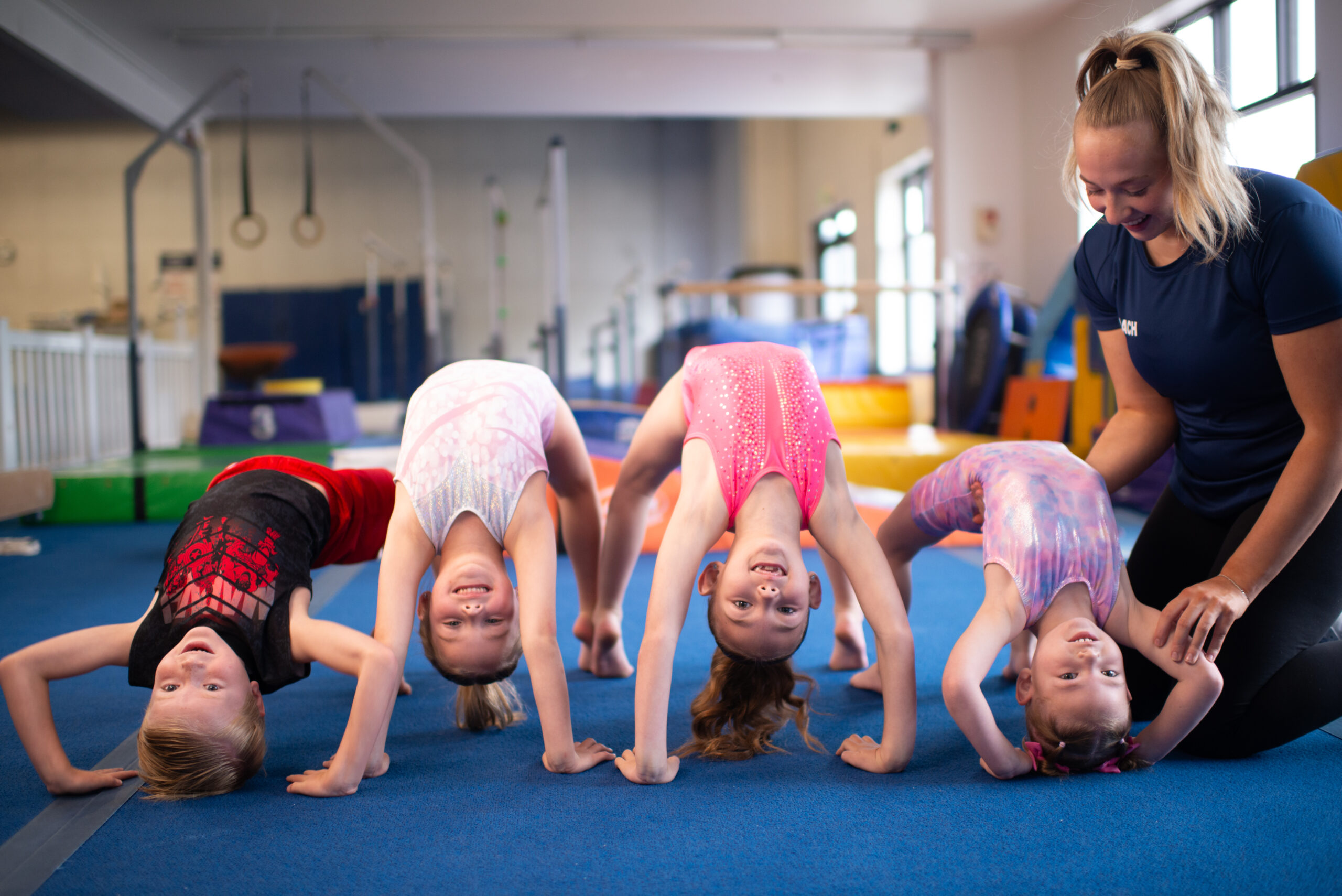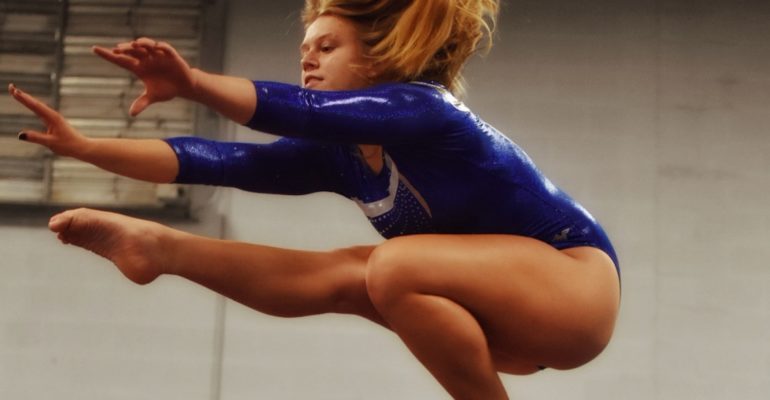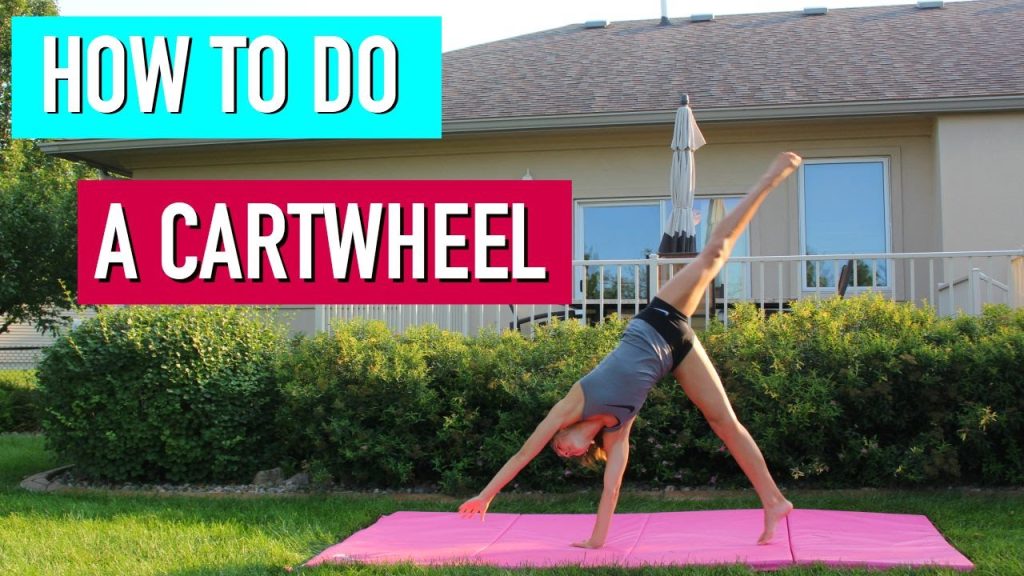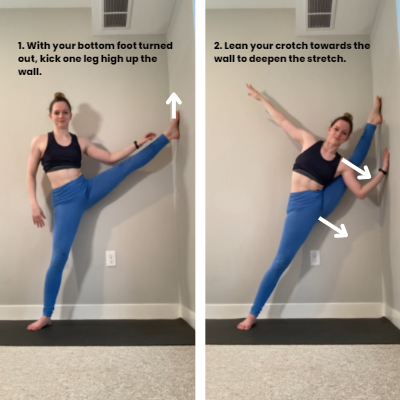Children can start gymnastics at various ages. Some begin as early as 18 months old.
Gymnastics is a sport that combines strength, flexibility, and coordination. It helps children develop these skills from a young age. Many parents wonder when their child should start. The good news is that there is no single right age. Some programs offer classes for toddlers, while others start with preschoolers.
Early exposure can be beneficial for physical development. It also helps children build confidence and discipline. Each child is unique, so it’s important to consider their individual readiness. In this blog, we will explore the ideal age to start gymnastics and what you should know before enrolling your child.
Introduction To Gymnastics For Kids
Gymnastics is a great activity for kids. It builds strength, flexibility, and coordination. Many parents wonder about the right age to start. This blog post will give you all the information you need.
Benefits Of Early Gymnastics
Starting gymnastics at a young age has many advantages. First, children develop physical skills. These include balance, strength, and flexibility. These skills help them in other sports too.
Young gymnasts also improve their social skills. They learn to work in a team. They make new friends and learn to follow instructions. This boosts their confidence and discipline.
Common Concerns Of Parents
Many parents worry about safety. Gymnastics can seem risky. But good gyms have trained coaches. They ensure the kids are safe and use proper equipment.
Another concern is time commitment. Parents fear that gymnastics will take too much time. But most beginner classes are only once or twice a week. This helps kids balance school and other activities.

Credit: destira.com
Ideal Age To Start Gymnastics
Gymnastics is a sport that builds strength, flexibility, and coordination. Many parents wonder about the best age for their children to start gymnastics. Knowing the ideal age can help in making the right decision.
Recommended Starting Age
Experts say the best age to start gymnastics is around 5 to 7 years old. At this age, children have the attention span to follow instructions. They are also physically ready to learn basic skills.
Starting early helps children develop good habits. They learn discipline and focus. It also gives them a head start in mastering gymnastics techniques.
Physical And Mental Readiness
Physical readiness includes having basic motor skills. Children should be able to run, jump, and balance. These skills are essential for gymnastics.
Mental readiness is equally important. Children need to listen and follow directions. They should be able to work in a group and take turns. This helps create a positive learning environment.
Overall, the ideal age combines both physical and mental readiness. This ensures a fun and safe experience in gymnastics.
Types Of Gymnastics Programs
Gymnastics is a sport that offers various programs for children of all ages. Each program caters to different skill levels and interests. Understanding these programs can help parents choose the best fit for their child. Below, we explore the main types of gymnastics programs.
Preschool Gymnastics
Preschool gymnastics is designed for the youngest athletes. Typically, children as young as 18 months can join. These classes focus on basic motor skills and coordination. The activities include simple exercises like jumping, rolling, and balancing. The goal is to make fitness fun and build confidence.
Classes are usually short, around 30 to 45 minutes. They are packed with playful activities. This keeps the little ones engaged and excited. Parents often participate in these sessions, creating a bonding experience.
Recreational Vs. Competitive
Recreational gymnastics is for children who enjoy the sport without pressure. These classes emphasize fun and fitness. Kids learn basic skills and routines at their own pace. There are no high stakes or competitions. It’s perfect for those who just want to stay active and have fun.
Competitive gymnastics, on the other hand, is more structured. It requires a higher level of commitment. Athletes train rigorously and compete in local, regional, or national events. This program is ideal for children with a strong passion for the sport and a desire to excel.
Choosing between recreational and competitive programs depends on your child’s interest and commitment. Both paths offer valuable experiences and benefits. The key is to keep the child’s enjoyment at the forefront.

Credit: aagutah.com
Choosing The Right Gymnastics School
Finding the right gymnastics school is crucial for your child’s development. A good school can build confidence and teach important skills. Here’s how to choose the best one.
Researching Local Gyms
Start by researching local gyms in your area. Look for schools with good reviews and a strong reputation. Ask other parents for recommendations.
Check their websites for information on their programs and schedules. Make a list of gyms that offer classes for your child’s age group.
Evaluating Coaches And Facilities
Visit the gyms on your list. Evaluate the coaches and facilities. The coaches should be experienced and certified. They should also be good with children.
The facilities should be clean and well-maintained. Look for modern equipment and safety measures. A good gym should prioritize safety.
Here’s a table summarizing key points:
| Aspect | What to Look For |
|---|---|
| Coaches | Experience, certification, child-friendly |
| Facilities | Clean, modern equipment, safety measures |
Choosing the right gymnastics school can make a big difference. Do your research and trust your instincts. Your child deserves the best start in gymnastics.
Preparing Your Child For Gymnastics
Starting gymnastics at a young age can be beneficial. It helps children develop physical and mental skills. Before enrolling your child, consider their readiness. Both physical and emotional preparedness are important for a positive experience.
Physical Preparation Tips
Ensure your child is physically ready for gymnastics. Begin with basic exercises at home. Stretching and simple movements can build flexibility. Strength training is also useful. Focus on core muscles. Planks and sit-ups are good exercises. Make sure your child has proper footwear and attire. This prevents injuries and helps them move freely.
Emotional Readiness
Gymnastics requires emotional readiness too. Your child should be able to follow instructions. They need to handle both success and failure. Encourage a positive attitude. Praise their efforts, not just achievements. Support from parents is crucial. Make sure they feel comfortable and excited to learn.
Safety Considerations
Gymnastics is a wonderful sport that helps children develop strength, balance, and flexibility. But before enrolling your child, understanding safety considerations is crucial. Safety ensures that young gymnasts can enjoy their practice without unnecessary risks.
Importance Of Proper Equipment
Using the right equipment is vital for safety in gymnastics. Proper mats, bars, and beams are essential. They provide the necessary support and cushioning. Make sure the equipment is well-maintained. This helps prevent accidents.
Ensure the gym has quality mats on the floor. They reduce the impact from falls. Bars and beams should be firm and stable. This ensures they can support the child’s weight. Check for any damage or wear and tear.
Injury Prevention Strategies
Injury prevention is key in gymnastics. Start with a proper warm-up session. Stretching and light exercises prepare the muscles. This reduces the risk of strains and sprains.
Supervision is also important. Coaches should watch the children closely. They should guide them through each move. This helps correct any mistakes and avoid injuries.
Encourage your child to listen to their body. If they feel pain, they should stop. Pushing through pain can lead to serious injuries. Teach them to communicate with their coach about any discomfort.
Balancing Gymnastics With Other Activities
Children can start gymnastics as young as two years old. This early start helps develop balance and coordination. Balancing gymnastics with other activities ensures a well-rounded childhood.
Balancing gymnastics with other activities can be a challenge for young athletes. Children have school, homework, and social lives to manage. Plus, other sports or hobbies can also demand their time. Finding the right balance ensures they stay healthy and happy.Time Management Tips
Parents can help their children manage time effectively. Create a daily schedule that includes all activities. This helps children see how their time is spent. Prioritize activities that matter most. School and homework should come first. Gymnastics practice can follow. Using a planner can also be helpful. Write down all important events and deadlines. This can include school projects, gymnastics meets, and family events. Having a visual reminder helps kids stay organized. Teach children to break tasks into smaller steps. A big project can seem overwhelming. Small steps make it more manageable. This approach works for both schoolwork and gymnastics skills.Ensuring A Well-rounded Experience
It’s important for children to have a well-rounded experience. Gymnastics should not be their only focus. Encourage them to try other activities. This could be art, music, or another sport. Different activities help develop various skills and interests. Social time is also crucial. Children need time with friends outside of gymnastics. This helps them build strong relationships and social skills. Arrange playdates or join community groups. Ensure children get enough rest. Overloading their schedule can lead to burnout. Make sure they have downtime to relax and recharge. A balanced schedule helps maintain their physical and mental health. Balancing gymnastics with other activities leads to a happier, healthier child.
Credit: gmgc.com
Parental Involvement And Support
Parents play a crucial role in a child’s gymnastics journey. Their support and involvement can make a significant difference in the child’s experience and success. Let’s explore how parents can encourage their child and manage expectations effectively.
Encouraging Your Child
Encouragement is essential for young gymnasts. Positive reinforcement helps build confidence and keeps them motivated. Here are some ways parents can encourage their child:
- Attend Practices: Show interest by watching practices.
- Celebrate Achievements: Praise both big and small accomplishments.
- Be Patient: Understand that progress takes time.
Being present at competitions and practices boosts the child’s morale. It shows them that their efforts matter. Offering words of encouragement after practices and events helps too. Celebrate their hard work, not just wins.
Managing Expectations
Setting realistic expectations is crucial. It prevents stress and disappointment. Here are some tips for managing expectations:
- Understand the Sport: Learn about gymnastics levels and progressions.
- Set Realistic Goals: Help your child set achievable goals.
- Focus on Effort: Value effort over results.
Knowing the sport’s demands helps in setting appropriate goals. Discuss these goals with your child. Make sure they are attainable. Emphasize the importance of effort and persistence. This approach fosters a healthy attitude towards gymnastics.
Parents should also communicate with coaches. Get regular updates on your child’s progress. This helps in understanding their development and adjusting expectations accordingly.
Long-term Benefits Of Gymnastics
Gymnastics offers many long-term benefits for children. These benefits extend beyond physical health. They also include life skills and discipline. Starting gymnastics at a young age can set the foundation for a healthy lifestyle. It builds strength, coordination, and confidence. Let’s explore the long-term benefits of gymnastics.
Physical Health And Fitness
Gymnastics improves overall physical health. It enhances flexibility and balance. Children develop strong muscles and bones through regular practice. Gymnastics also promotes cardiovascular health. Kids stay active and fit, reducing the risk of obesity. The sport encourages healthy habits that can last a lifetime.
Life Skills And Discipline
Gymnastics teaches valuable life skills. Children learn discipline and focus. They set goals and work hard to achieve them. The sport fosters perseverance and determination. Kids also develop time management skills. They balance training with school and other activities. These skills are useful in all areas of life. Gymnastics also builds self-esteem. Children gain confidence as they master new skills. This confidence can help them face challenges in the future.
Frequently Asked Questions
What Is The Best Age To Start Gymnastics?
Most experts recommend starting gymnastics between ages 3 to 5. At this age, children develop flexibility and coordination.
Can Toddlers Join Gymnastics Classes?
Yes, toddlers as young as 18 months can join parent-child gymnastics classes. These classes focus on basic motor skills.
Is Gymnastics Safe For Young Children?
Gymnastics is safe for young children when supervised by trained coaches. Proper equipment and safety measures are essential.
What Skills Do Young Gymnasts Learn First?
Young gymnasts start with basic skills like forward rolls, balance, and coordination exercises. These build a strong foundation.
Conclusion
Starting gymnastics young offers many benefits. Kids can develop strength and flexibility early. They also learn discipline and teamwork. Parents should consider their child’s interest and readiness. Gymnastics can be fun and rewarding. Age is just a number when passion is involved.
Find a good coach and supportive environment. Encourage your child to enjoy the journey. Every small step counts in their growth.



